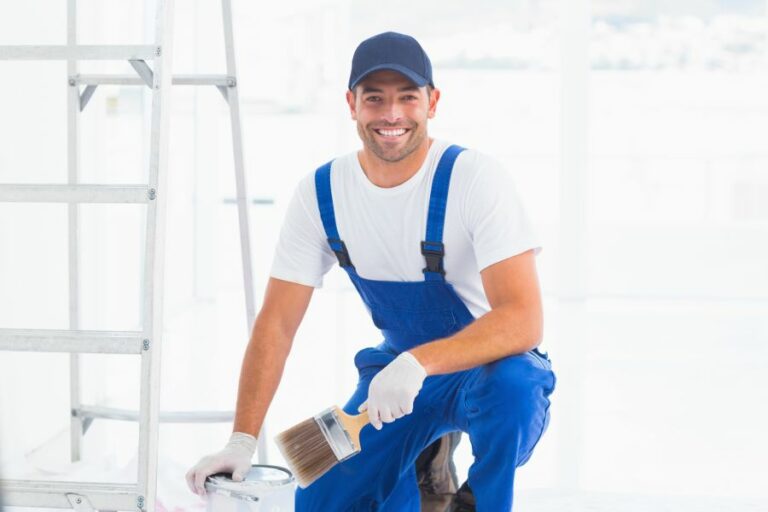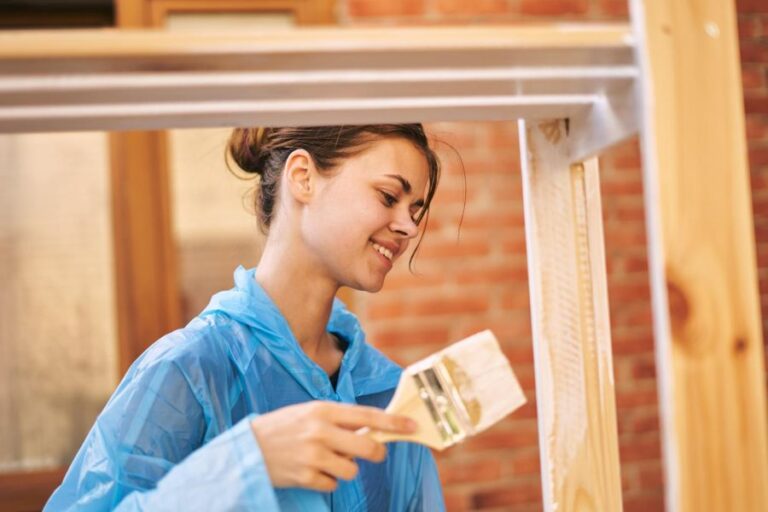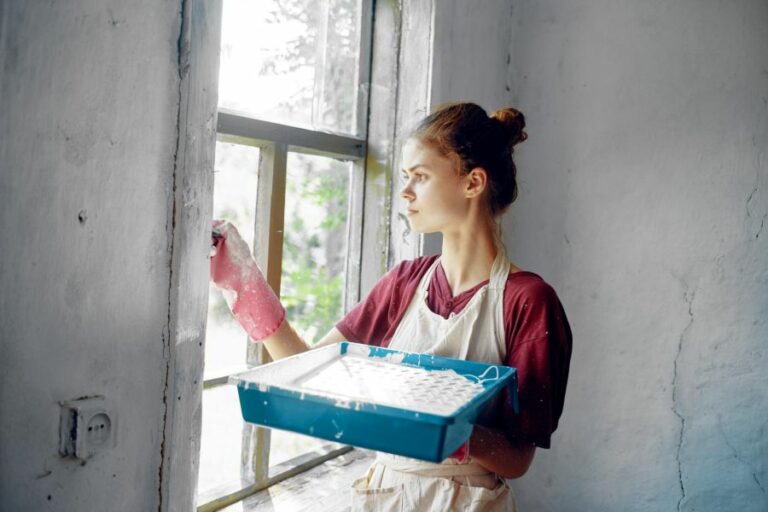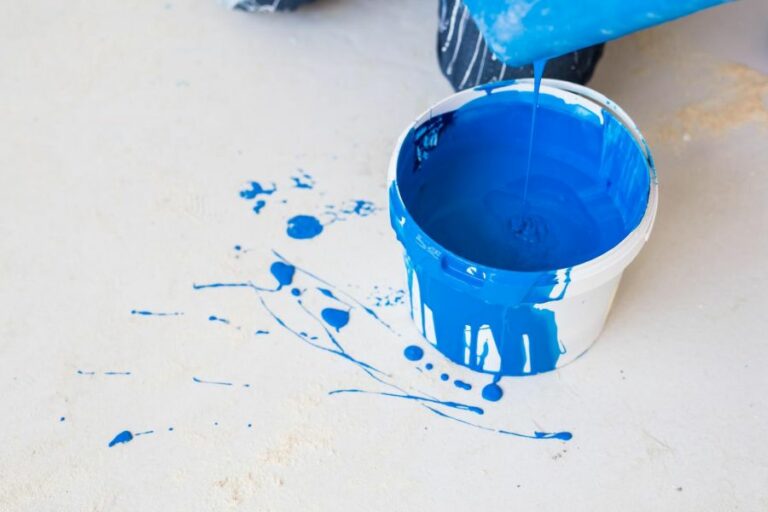Best Interior Paint Sheen Options, 25 Things You Should Know
Choosing the right paint sheen is crucial for achieving the perfect finish when it comes to giving your home a new look. With various sheen options available, deciding which one will bring out the best in your space can be challenging. Luckily, I’ve got the answers to help you make the right decision. Let’s delve into the best interior paint sheen options for different rooms, considering durability, aesthetics, and maintenance factors.
Best interior paint sheen options:
The best interior paint sheen options include a flat (matte) finish for hiding imperfections and low-traffic areas, eggshell finish for subtle shine and moderate-traffic areas, satin finish for a subtle sheen and high-traffic/high-humidity areas, semi-gloss finish for increased reflectivity and easy maintenance, and high-gloss finish for bold looks and highest durability. The choice depends on the room’s function, desired appearance, and maintenance requirements.

Wondering which paint sheen is best for your interior walls? Read on as we dive into the world of paint finishes, from the ultra-matte, washable flat to the highly-reflective, easy-to-clean gloss options. Discover the pros and cons of each paint sheen to make the perfect choice for your home.
Contents
- 1 Top Choices for Interior Paint Sheen
- 2 Flat vs. Satin: Ideal Interior Wall Finish
- 3 Eggshell vs. Satin: The Superior Wall Finish
- 4 Most Favored Interior Trim Sheen Revealed
- 5 Optimal Paint Sheen for Humid Rooms
Top Choices for Interior Paint Sheen
Choosing the right paint sheen for your home’s interior is crucial. Not only does it impact the overall appearance of your space, but it can also affect the durability, ease of cleaning, and longevity of the paint job.
With a myriad of paint sheen options available, making the best choice for your specific needs and preferences can be challenging.
• Flat (Matte) Finish
Flat or matte finish paint is popular for interior walls, particularly in living rooms, bedrooms, and dining rooms. The main advantage of this sheen is its ability to hide minor imperfections on the wall surfaces, such as small cracks, dents, or bumps.
Flat paints also offer a rich and uniform color appearance without distracting shine or reflection.
However, flat paints have a few drawbacks, including lower durability and more challenging maintenance. They are not as resistant to stains and dirt, and cleaning them might require more frequent repainting.
As such, they are less suitable for high-traffic or high-moisture areas, such as kitchens, bathrooms, or hallways.
In summary, flat finish paints are recommended for:
- Hiding minor wall imperfections
- Creating a non-reflective, uniform color appearance
- Low-traffic, low-moisture areas
• Eggshell Finish
An eggshell finish strikes a balance between flat and glossy sheens, offering a slight hint of shine without going overboard. As a result, it is an excellent choice for those who prefer a subtle shimmer on their walls while maintaining a generally toned-down appearance.
One of the significant benefits of eggshell paint is its increased durability compared to a flat finish. It is more resistant to stains and scuffs, making it easier to clean and maintain.
Eggshell paints are suitable for areas with moderate traffic, such as living rooms, bedrooms, and hallways. They are also appropriate for family rooms, kids’ rooms, and other spaces where a balance between durability and a refined appearance is desired.
In summary, eggshell finish paints are recommended for:
- Subtle shine and elegance
- Moderate-traffic areas
- Increased durability compared to flat finishes
• Satin Finish
Satin finish paints offer a slightly glossier appearance than eggshell finishes, making them ideal for those who desire a subtle sheen without going too glossy.
Satin paints have increased durability and are more resistant to stains, moisture, and mildew, making them suitable for high-traffic or high-humidity areas like kitchens and bathrooms. They are also an excellent choice for trim, doors, and windows where a smooth finish is desired.
However, satin finishes might reveal more imperfections on the wall surface than flat or eggshell paints. As such, thorough preparation, including patching and sanding, is essential to achieve a flawless finish.
In summary, satin finish paints are recommended for:
- Subtle sheen and smooth appearance
- High-traffic and high-humidity areas
- Trim, doors, and windows
• Semi-Gloss Finish
Semi-gloss finish paints are a popular choice for rooms that require a combination of increased durability and a more reflective appearance. They are more resistant to stains, moisture, and mildew, making them ideal for kitchens, bathrooms, laundry rooms, and mudrooms.
Semi-gloss paints are also an excellent option for trim, doors, and windows, and they are relatively easy to clean and maintain.
However, semi-gloss finishes have a more noticeable shine and will highlight any wall imperfections. As a result, proper surface preparation, including filling and sanding, is crucial to ensure a smooth and professional-looking paint job.
In summary, semi-gloss finish paints are recommended for:
- Increased sheen and reflectivity
- High-traffic, high-moisture rooms
- Easy cleaning and maintenance
• High-Gloss Finish
High-gloss finish paints offer the most reflective and shiny appearance of all sheen options. They are suitable for areas where a bold and dramatic look is desired, and they provide the highest level of durability and stain resistance.
High-gloss paints are an excellent choice for trim, doors, cabinets, furniture, accent walls, or other decorative elements you wish to highlight.
However, high-gloss finishes can be unforgiving and will reveal any wall imperfections, brush strokes, or roller marks. As such, meticulous surface preparation and skilled application are necessary to achieve a flawless finish.
In summary, high-gloss finish paints are recommended for:
- Bold and dramatic look
- Highest durability and stain resistance
- Trim, doors, cabinets, and furniture
Making the best choice for your interior paint sheen depends on various factors, including the room’s function, desired appearance, and maintenance requirements.
By selecting the appropriate sheen for your specific needs, you can achieve a beautiful and long-lasting result that enhances your home’s atmosphere and style.
Sheen | Best For | Benefits |
|---|---|---|
Flat/Matte | Living rooms, bedrooms, ceilings | Hides surface imperfections, low glare |
Eggshell | Dining rooms, living rooms, bedrooms | Slight sheen, washable, more durable than flat/matte |
Satin | Kitchens, bathrooms, hallways, kids’ rooms | Smooth finish, easy to clean, mildew-resistant |
Semi-gloss | Doors, trim, bathrooms, kitchens | Highly washable, moisture-resistant, durable |
High-gloss | Doors, trim, cabinets | Most durable, easy to clean, stain-resistant |
Flat vs. Satin: Ideal Interior Wall Finish
When it comes to painting interior walls, selecting the right paint finish is a crucial decision that often leaves homeowners perplexed. With a myriad of options available in the market, the debate of “flat vs. satin” is quite common.
• Understanding Flat Paint Finishes
Flat paint, also known as matte paint, is characterized by its non-reflective finish. As a result, it can hide surface imperfections and uneven textures quite well. Flat paint is often recommended for rooms that receive minimal traffic, such as bedrooms and private spaces.
– Pros of Flat Paint Finishes
- Hides Imperfections: The primary advantage of flat paint finishes is their ability to mask surface flaws, such as dents, cracks, and rough patches, making them ideal for older walls that have seen their fair share of wear and tear.
- No Glossy Sheen: Flat paint finishes do not possess any sheen, making them an excellent choice for people who prefer a non-glossy appearance.
- Cost-Effective: Flat paint is typically less expensive compared to other paint finishes, making it an attractive option for budget-conscious homeowners.
– Cons of Flat Paint Finishes
- Less Durable: Flat paint finishes are prone to showing marks, scuffs, and stains, making them less suitable for high-traffic areas.
- Difficult to Clean: Flat paint is not easily washable, so cleaning marks or stains can be quite challenging. In some cases, you may have to repaint the entire surface to get rid of unsightly spots.
• Exploring Satin Paint Finishes
Satin paint finishes are somewhere between flat and semi-gloss paint varieties. They offer a low sheen that is subtly reflective. Due to its durability and ease of cleaning, satin paint is ideal for areas with high traffic or those prone to dust and moisture, such as kitchens, bathrooms, and living rooms.
– Pros of Satin Paint Finishes
- Moderate Reflectivity: Satin paint finishes perfectly balance flat and glossy paint, giving you a subtle reflective sheen without appearing overly shiny.
- Durability: Satin finishes are more durable than flat paint finishes and can withstand daily wear and tear.
- Easy to Clean: Satin paint is washable and easier to clean than flat paint, making it an excellent choice for rooms requiring frequent cleaning.
– Cons of Satin Paint Finishes
- Not Ideal for Hiding Imperfections: Unlike flat finishes, satin paint may highlight wall imperfections due to its slightly reflective nature.
- Higher Cost: Satin paint tends to be more expensive than flat paint, which may be a deciding factor for homeowners on a tight budget.
• Comparing Flat and Satin Paint Performance Across Different Factors
– Visually Concealing Imperfections
Flat paint emerges as the winner when it comes to hiding uneven textures or surface flaws. Its non-reflective finish conceals imperfections effectively. On the other hand, Satin paint may draw attention to such issues due to its slightly reflective nature.
– Durability and Resistance to Damage
Satin paint finishes are more resistant to daily wear and tear, making them a better choice for high-traffic areas or rooms prone to dust and moisture.
– Ease of Cleaning
Satin paint finishes are easier to clean and maintain. A simple wash with soapy water can remove most stains and marks. Flat paint, conversely, is less washable and may require repainting to remove visible spots.
– Aesthetic Appeal
The choice between flat and satin paint finishes ultimately depends on personal preferences regarding their appearance. Flat paint offers a non-glossy, smooth appearance, while satin paint provides a low sheen, offering a hint of elegance and sophistication.
– Cost
Flat paint is generally less expensive than satin paint. A strict budget homeowner can opt for flat paint as a cost-effective yet visually appealing option.
• Making the Right Decision: Flat or Satin
In conclusion, flat paint finishes are ideal for hiding wall imperfections and are cost-effective but offer limited durability and cleaning options. Conversely, satin paint finishes provide increased durability and ease of cleaning at the expense of not concealing surface flaws as well.
For rooms with high traffic or those prone to dust and moisture, such as kitchens, bathrooms, or living rooms, satin paint finishes are recommended due to their greater durability and ease of cleaning.
In contrast, flat paint finishes are suitable for bedrooms and private spaces, where wall imperfections may be a concern.
Ultimately, the decision between flat and satin paint finishes will depend on individual factors such as budget, desired aesthetic appeal, and room usage. By considering these aspects and weighing the pros and cons of each option, you can make an informed decision that best suits your home’s unique needs.
Eggshell vs. Satin: The Superior Wall Finish
When it comes to painting the interior of your home, selecting the proper paint finish is an essential step in achieving the desired outcome.
• Understanding Paint Finishes
There are five primary types of paint finishes: flat, eggshell, satin, semi-gloss, and gloss. Each finish reflects a different amount of light, creating a specific aesthetic appeal and providing varying degrees of durability.
To better determine if eggshell or satin is the right choice for your walls, let’s examine the characteristics of each finish.
– Eggshell Finish
An eggshell finish has a low-sheen, velvety appearance that is slightly more reflective than a flat finish. It’s named after the smooth texture of an eggshell, which it resembles. This finish is a popular choice for living rooms, bedrooms, and other low-traffic areas of the home.
Advantages of Eggshell Finish:
- Smooth, muted appearance
- Easier to clean than flat paint
- Good at hiding minor imperfections
Disadvantages of Eggshell Finish:
- Less durable than satin and gloss finishes
- May require more touch-ups and maintenance
- Not the best choice for high-traffic areas
– Satin Finish
A satin finish is characterized by a soft, silky sheen that looks more elegant than eggshell. This finish has a moderate level of reflectivity, making it a versatile choice for many areas of the home.
Satin is popular for kitchens, bathrooms, and hallways due to its higher durability and easier cleaning properties.
Advantages of Satin Finish:
- Durable and long-lasting
- Easy to clean and maintain
- Suitable for high-traffic areas
Disadvantages of Satin Finish:
- Highlights surface imperfections
- May require more coats for even coverage
- Higher cost than eggshell finishes
• Factors to Consider When Choosing a Paint Finish
To determine whether eggshell or satin paint is the better choice for your walls, you’ll want to consider several factors, including the room’s purpose, the condition of your walls, and your personal aesthetic preferences.
– Room Usage and Traffic
As mentioned earlier, eggshell paint is generally recommended for low-traffic areas, such as bedrooms and living rooms, while satin paint is more suitable for high-traffic areas like kitchens, bathrooms, and hallways.
Consider the usage of the space and the likelihood of needing to clean or touch up the walls in your decision-making process.
– Surface Condition
Eggshell finishes tend to hide wall imperfections better than satin finishes due to their lower reflection of light. If your walls have minor dents, scratches, or other flaws, an eggshell finish may be better.
However, if your walls are in excellent condition, you may prefer the elegant sheen that satin provides.
– Aesthetic Preferences
Ultimately, the choice between eggshell and satin finishes comes down to personal taste. Some people prefer the more muted, velvety appearance of eggshell, while others enjoy the soft, silky sheen of satin.
Consider which look aligns better with your overall design vision and the atmosphere you want to create in your space.
• Conclusion: Making Your Final Decision
To help you decide between eggshell and satin finishes for your walls, think about the room’s purpose and foot traffic, the condition of the walls, and your own design preferences. If you want a low-sheen, velvety look that hides minor imperfections and is suitable for low-traffic areas, go with eggshell.
However, choose satin if you want a more durable, easy-to-clean finish with a soft sheen, and it’s intended for higher-traffic areas. Ultimately, the decision is yours, and either option can deliver beautiful, long-lasting results for your interior walls.
For further guidance, consult resources like The Paint Quality Institute for expert opinions and advice.
Most Favored Interior Trim Sheen Revealed
Choosing the right sheen for your interior trim is a significant decision that impacts the overall aesthetic of your indoor spaces. The goal is to find the perfect balance between practicality and visual appeal.
• What is Sheen?
Sheen refers to the amount of light that reflects off the surface of a painted area. This characteristic greatly influences the appearance of a room and can even affect the surface’s durability.
Several sheens are on the market for interior trim, each with its own benefits and drawbacks. The most common types include:
- Flat or Matte
- Eggshell
- Satin
- Semi-gloss
- High gloss
• Importance of Sheen Selection
Selecting the appropriate sheen is essential for multiple reasons:
- Durability: Higher sheen levels generally provide more resistance to scuffs, stains, and moisture, which is especially important in high-traffic or damp areas.
- Maintenance: A higher sheen surface is easier to clean and maintain.
- Aesthetics: The sheen can draw attention to or hide specific features, textures, and details in your interior spaces.
• Popular Sheen for Interior Trim: Semi-Gloss
Although the choice of the sheen largely depends on personal preferences and specific project requirements, semi-gloss is often considered the most popular choice for interior trim.
There are several reasons why semi-gloss is preferred by homeowners and professionals alike:
– Durability and Easy Maintenance
Semi-gloss paint offers a balance between durability and aesthetics, making it suitable for high-traffic areas and rooms subjected to moisture fluctuations (like kitchens and bathrooms).
The higher sheen level provides resistance against stains, scuffs, and water damage. Moreover, it’s easier to clean and maintain than its lower sheen counterparts.
– Enhanced Visual Appeal
Semi-gloss trim adds a subtle shine to your room, making the trimwork stand out against the surrounding walls. This helps highlight the architectural details and features, providing a visually appealing contrast.
– Versatility
Semi-gloss sheen is versatile, as it complements various interior styles and design themes. Moreover, it delivers consistent results across different trim materials, including wood, metal, and vinyl.
– Smooth Finish
Providing a smooth and even finish, semi-gloss paint hides minor surface imperfections and blemishes. This can save you time and resources in terms of surface preparation and repairs.
• Expert Recommendations
As a professional with extensive experience in interior design and painting, I recommend using semi-gloss for interior trimwork due to its durability, ease of maintenance, and versatile visual appeal. It can be used to create a cohesive look in various interiors, from traditional to contemporary.
However, it’s essential to consider the specific requirements and preferences for the project at hand. Those aiming for a more muted, understated appearance might prefer satin, while those seeking an ultra-durable, glossy finish might opt for high gloss.
Ultimately, personal taste and the desired outcome will dictate the choice of sheen. Nonetheless, semi-gloss remains a popular and versatile option worth considering for interior trim applications.
• Helpful Resources
For additional guidance on selecting the right sheen for your interior spaces, visit Choosing a Paint Sheen by This Old House. It provides practical advice and helpful tips on selecting the best sheen depending on the specific room, surface, and desired outcome.
Moreover, always consult your paint manufacturer’s guidelines and recommendations when choosing a sheen, as they can provide valuable insights into the product’s specifications, applications, and performance.
Optimal Paint Sheen for Humid Rooms
When it comes to selecting the right paint sheen for a room with moisture, there are several factors to consider, including the room’s general use, the level of moisture present, and specific needs such as mold and mildew resistance.
• Understanding Paint Sheens
Paint sheens can be categorized into flat, mid-sheen, and gloss.
– Flat Sheens
Flat sheens have little to no shine and are the least durable. They are commonly used on ceilings, walls in low-traffic areas, and where hiding surface imperfections is necessary. Examples of flat sheens include flat matte, eggshell, and chalky matte.
– Mid-Sheens
Mid-sheens have a medium gloss level and are more durable than flat sheens. They are commonly used in busier areas, such as hallways, living rooms, and bedrooms. Examples of mid-sheens include satin, pearl, and velvet finishes.
– Gloss Sheens
Gloss sheens are high-shine and highly durable. They are commonly used on doors, window trims, cabinets, and areas that require frequent cleaning. Examples of gloss sheens include semi-gloss, gloss, and high-gloss finishes.
• Assessing Moisture Levels in the Room
Before selecting a paint sheen, it is crucial to evaluate the moisture levels of the room. Rooms with high moisture content require more durable and water-resistant sheens. Situations that may increase moisture levels include:
- Bathrooms and laundry rooms
- Kitchens and dining areas
- Basements and crawlspaces
- Rooms with high humidity or condensation issues
- Areas prone to flooding or leaks
One method of measuring a room’s moisture content is by using a moisture meter, easily found at local hardware stores or online retailers.
• Choosing the Right Sheen for a Moisture-Prone Room
Given the paint sheen durability and moisture level factors, we can now select the most appropriate sheen for our room.
– Moisture-Prone Rooms with Minimal Wear and Tear
A mid-sheen, such as satin or pearl, is a good option for rooms with moderate moisture levels and minimal wear and tear. These sheens have a slightly glossy surface, which helps repel water and resist staining.
They are also easier to clean than flat sheens, making them more suited to spaces susceptible to moisture, like bedrooms and hallways.
– High Moisture Areas with Moderate Wear and Tear
A semi-gloss finish is recommended in rooms with high moisture levels and moderate wear and tear, such as bathrooms and kitchens.
Semi-gloss is more durable and water-resistant than mid-sheens, making it ideal for areas that require frequent cleaning and experience more moisture. It is also more resistant to mold and mildew, protecting surfaces from moisture-related damage.
– High Moisture Areas with High Wear and Tear
A gloss or high-gloss finish may be the best choice for rooms with high wear and tear and moisture levels, such as garage floors, exterior doors, or high-traffic areas. These sheens are extremely durable, water-resistant, and easy to clean.
They also provide a sleek, reflective appearance that may be desirable for certain design styles.
• Additional Tips for Moisture-Prone Rooms
- Always prime surfaces before applying paint to improve adhesion and durability.
- Choose a paint specifically designed for damp environments, such as mildew-resistant or moisture-barrier paint.
- Ensure proper ventilation in rooms with high moisture levels to reduce condensation and promote evaporation.
- Maintain appropriate humidity levels (between 30-50%) to minimize moisture-related issues.
- Regularly inspect and maintain plumbing, roofs, and other potential sources of moisture intrusion.
• Conclusion
When choosing the right paint sheen for a moisture-prone room, assessing the room’s moisture level and anticipated wear and tear is essential. Flat sheens are generally not recommended for moist environments, while mid-sheens like satin may work for moderately damp areas.
In high-moisture rooms, semi-gloss or gloss sheens may be required for optimal durability, water resistance, and easier maintenance.
Ultimately, the key is to achieve a balance between aesthetic preferences, durability requirements, and moisture resistance to create a comfortable, healthy, and attractive space.







